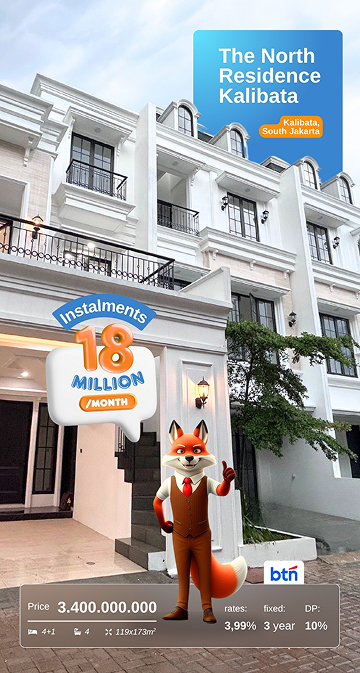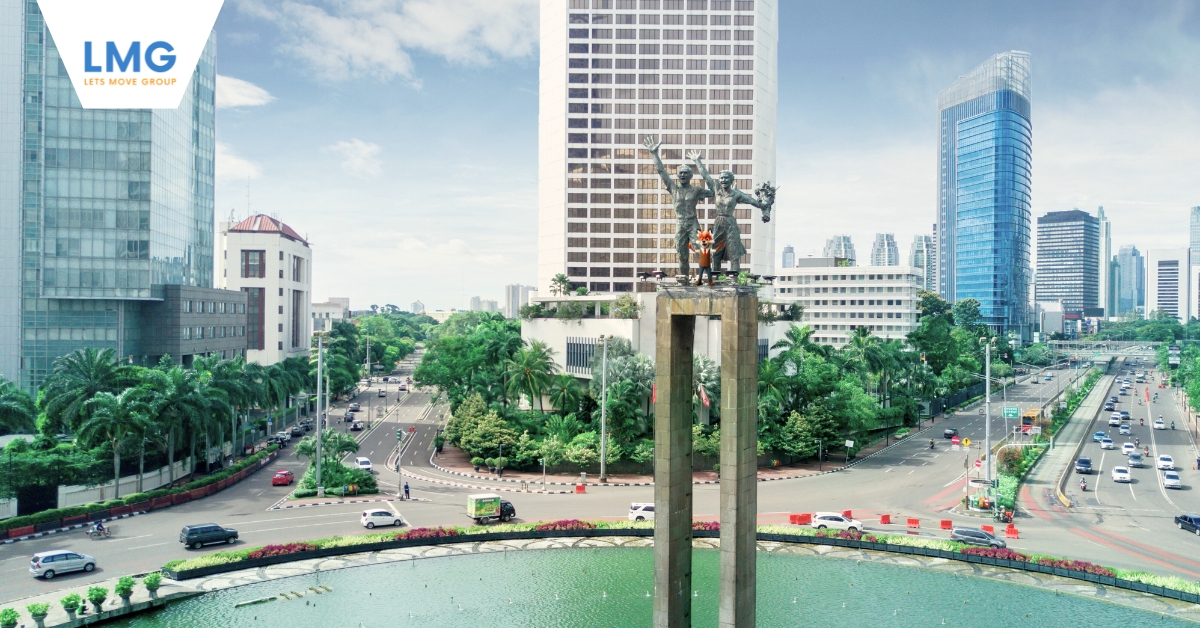While taking out a Kredit Pemilikan Rumah (KPR), or mortgage, remains one of the most popular ways for Indonesians to purchase their dream home, the reality is that not every application ends in success. A significant number of aspiring homeowners face rejection from banks, often without clear understanding of the reasons why.
So, why does a mortgage application get rejected? What are the warning signs? And most importantly—what can be done about it? Let’s break it all down.
What Is a Mortgage (KPR)?
Owning property in Indonesia involves thoughtful planning across a range of financial and legal considerations. One major factor that influences one’s ability to secure a home is, naturally, the cost; homes don’t come cheap.
A mortgage, or KPR, is essentially a loan facility provided by a bank or financial institution, designed to help you purchase property. As a borrower, you agree to repay the loan in instalments over a fixed term, complete with agreed-upon interest rates and specific conditions.
Through a mortgage scheme, you only need to put down a deposit (commonly referred to as DP), while the remaining balance is paid off in monthly instalments over a tenor that can range anywhere from 5 to 25 years.
And it’s not limited to new properties. KPR schemes can also apply to second-hand homes, renovation projects, or even auctioned properties, depending on the policies of each bank.
Basic Mortgage Requirements in Indonesia
Though every bank may have its own policies and procedures when it comes to mortgage approval, several baseline criteria are widely applied by financial institutions across Indonesia. Understanding these can give you a better sense of how ready you are before making a formal application.
Applicant’s Age
Banks usually set age limits to ensure that borrowers remain in their productive working years throughout the mortgage term.
- Minimum age: 21 years old, or legally married.
- Maximum age: Generally 55 years old by the end of the loan term, or up to 65 for certain professionals or self-employed individuals with proven financial stability.
If you're too young (with no stable income yet) or too close to retirement, your application might be declined or the approved tenor might be significantly shortened.
Stable and Consistent Income
Your monthly income plays a critical role in determining your eligibility. The bank needs to ensure that you have sufficient means to cover the monthly repayments.
For employees, this typically means showing payslips and a letter of employment confirming at least two years of work experience.
For entrepreneurs or freelancers, expect to submit bank statements, business financial reports, and a valid tax number (NPWP).
The more transparent and steady your cash flow appears, the stronger your case for a mortgage approval.
Debt to Income Ratio (DTI)
This refers to the percentage of your monthly income that goes towards debt repayments—including the mortgage you’re applying for.
Most banks cap this ratio at around 30–40% of your net monthly income.
If you already have other loans—such as credit card payments, car finance, or personal loans—these will be factored into the equation.
A high ratio will signal risk to the bank, often resulting in rejection.
Clean Credit Report (BI Checking / SLIK OJK)
Banks will also review your credit report via Indonesia’s credit information system, formerly known as BI Checking, now called SLIK OJK.
Late payments on credit cards, overdue motorbike loans, or unpaid online loans will all show up—and they matter.
If your credit falls into the collectability level 3 or above (usually indicating delinquency), your mortgage application will most likely be declined. That's why keeping a clean credit record is vital before you even consider applying.
Signs That Your Home Loan Application May Be Rejected
After understanding the key requirements for applying for a Mortgage—whether it’s for a home or a commercial property—the next thing to look out for are the red flags that may signal a failed application.
To avoid being left in limbo or holding on to false hope, here are several common indicators that your KPR application may have been rejected:
The Bank Doesn’t Get Back to You
If it’s been more than two weeks since you submitted your application and you haven’t heard a word from the bank—or they’ve only given vague or inconclusive responses—this may be an early sign that your Mortgage application has been quietly declined.
High Debt Ratio
One of the most common reasons for rejection is having a debt-to-income ratio that’s simply too high. If your monthly debt obligations (including the proposed mortgage repayments) exceed 40% of your total income, the bank may see you as a high-risk borrower with limited repayment capacity.
Incomplete or Inaccurate Documentation
Even small errors or mismatches—like an inactive tax number (NPWP), inconsistent payslips, or unclear photocopies of your ID—can halt your application. These technical issues can cause your file to be rejected before it even reaches the approval stage.
Why Was My KPR Application Rejected?
1. Being Dishonest During the Interview Process
Transparency is absolutely non-negotiable when applying for a Mortgage. Banks have strict verification processes that cover your financial history, employment, and outstanding debts.
If you attempt to “polish” your data—such as by:
- Claiming you have no existing loans when you actually do,
- Inflating your income without legal proof,
- Hiding other financial obligations,
the bank may consider your application too risky and reject it outright. Any indication of dishonesty or manipulation is an immediate red flag.
2. Applying for a Mortgage with a Poor Credit History
Every financial transaction you’ve made using credit is recorded in what was once called BI Checking, now referred to as SLIK OJK in Indonesia. If you have ever:
- Defaulted on a credit card between 1–24 months before applying,
- Been late on car loans or online lending repayments,
- Regularly paid instalments past their due date,
your credit score will likely have taken a hit—making you a less attractive borrower in the eyes of banks. A low credit score often translates to an automatic rejection.
3. Listed on the BI Checking / SLIK OJK Blacklist
If you’ve had a loan go into default or have previously failed to make repayments entirely, and this has placed you on the SLIK OJK blacklist, your chances of getting a KPR approved are extremely slim. Banks typically won’t take the risk with applicants who carry a history of serious financial red flags.
4. Too Many Active Debts
Banks assess your Debt-to-Income Ratio carefully. If:
you already have multiple ongoing instalments—say, a car loan, gadget financing, and a few credit cards;
and your total repayments exceed 40% of your monthly earnings,
lenders may see you as financially overextended. and simply doesn’t leave enough breathing room for a new mortgage.
5. Age and Employment Instabilit
Age and job stability play a major role in whether your mortgage application will be approved. Here are a few conditions that might raise red flags:
Your age at the end of the mortgage term is near or beyond retirement,
You’ve only just started your current job (less than 1–2 years),
You’re on a contract or freelance basis without proof of stable income.
Banks need assurance that your income will remain steady throughout the loan term. Without that stability, your ability to keep up with repayments becomes questionable, and that’s a risk they’re rarely willing to take.
6. Incomplete or Invalid Documents
Even something as technical as incomplete or inaccurate paperwork can lead to your mortgage application being rejected. Banks require thorough and valid documentation as the foundation of their assessment. If issues arise right from the beginning, there’s a high chance your application won’t move forward. Here are a few common examples of documents that won’t be accepted during the mortgage (KPR) application process:
- Salary slips not matching the correct pay period
- Blurry or unclear photocopies of your ID card (KTP/NIK)
- Missing bank statements
- Inactive tax identification number (NPWP) or outdated employment letters
7. Issues with Property Ownership Status
It’s not just the applicant that needs to tick the boxes—your intended property must also meet legal requirements. Some common reasons why a mortgage application gets rejected due to property issues include:
- The land is under legal dispute
- The ownership certificate is incomplete or still under someone else’s name
- The property doesn’t yet have a valid building permit (IMB)
- Public facilities or road access around the property are in legal limbo. Banks will not approve financing for a property that isn’t considered “clean” in terms of legal or administrative status.
Mortgage Requirements for Foreign Nationals (KPR for Foreigners)
For foreign nationals (WNA) wishing to get a mortgage in Indonesia, there are additional conditions and potential hurdles to keep in mind:
- Not all banks can be mortgage lenders to foreign nationals. Some apply stricter policies and only consider applications from Indonesian citizens.
- Valid residence permits are mandatory: WNA must hold a valid KITAS or KITAP with sufficient remaining validity.
- The property must be located in zones legally designated for foreign ownership or use, as per Indonesian regulations.
- KPR for WNA only applies to properties with Right to Use (Hak Pakai) status, not Freehold (Hak Milik).
- The applicant’s income must be verifiable and ideally sourced from within Indonesia. If their primary income is from abroad, banks tend to be more cautious in evaluating financial eligibility.
If these requirements are not met, a mortgage application from a foreign national may be declined, even if all documents appear complete and finances look strong.
Banks Offering KPR for Foreign Nationals
A few banks in Indonesia have opened their doors to foreign nationals seeking home ownership through tailored KPR (mortgage) products. Below are some that currently provide these options:
Bank BCA
Bank Central Asia is one of Indonesia’s largest private banks and a well-known name in home financing. However, BCA currently does not officially provide mortgage facilities for foreign nationals. Their primary focus remains on Indonesian citizens.
Find Out More
Bank BTN
Bank Tabungan Negara is widely recognised for its commitment to housing finance. BTN has expressed its readiness to offer KPR products to foreign nationals, in line with existing government regulations.
Find Out More
Bank BRI
Bank Rakyat Indonesia also facilitates mortgages for foreign nationals under specific terms:
- The facility is intended for WNA with a fixed income
- The property certificate must be under the name of a legally married Indonesian spouse
- The loan maturity must be no later than one year before the WNA’s employment contract ends
- A prenuptial agreement must be in place between the WNA and their Indonesian spouse
Mortgage Types in Indonesia
In Indonesia, there are various types of home Mortgage loan types tailored to suit different financial situations and buyer profiles. Here are some of the most common options:
First Time Buyer Conventional Mortgage (Non-Subsidised)
This is the standard mortgage option offered by banks without any government assistance. The interest rates are determined by the bank and often follow market fluctuations, which means they can go up or down over time.
Subsidised Mortgage (KPR Subsidi)
This government-backed programme is aimed at helping lower-income earners purchase their first home. It typically offers lower interest rates and a reduced down payment to make home ownership more accessible.
Sharia Mortgage (KPR Syariah)
A KPR scheme based on Islamic principles, where transactions are structured around buying and leasing agreements rather than charging interest. It provides a more ethical alternative for buyers who prefer sharia-compliant financial products.
Mortgage Refinancing (KPR Refinancing)
This type of loan allows homeowners to use their existing property as collateral to access additional funds. It’s commonly used for home renovations, consolidating debt, or covering other financial needs.
Mortgage Take Over
This facility enables homeowners to transfer their existing mortgage from one bank to another, usually in pursuit of better rates or improved service.
Requirements for Subsidised and Non-Subsidised KPR
The application process for a mortgage can differ depending on whether you’re applying for a subsidised or commercial (non-subsidised) scheme. Here’s a breakdown:
Commercial Mortgage (Non-Subsidised) Requirements
Age: Applicants must be at least 21 years old and no older than 55 (or up to 65 for certain professions) by the end of the loan term.
Income: Must have a stable income and sufficient financial capacity to manage repayments.
Employment Duration: At least one year for permanent employees, or two years for freelancers and entrepreneurs.
Documents: A complete set of documents including ID (KTP), tax number (NPWP), salary slips, bank statements, and supporting documents.
Subsidised Mortgage (KPR Subsidi) Requirements
Nationality: Must be an Indonesian citizen living in Indonesia.
Age: At least 21 years old or married, and no older than 65 by the end of the mortgage term.
Income Cap: Monthly income must not exceed IDR 8 million for landed or vertical housing.
Property Ownership: Applicants must not already own a home or have received prior housing subsidies.
Employment Duration: Minimum of one year of employment.
Simulasi KPR: Hitung Suku Bunga KPR Anda dengan Kalkulator KPR Lets Move Group!
Benefits and Drawbacks of Commercial vs Subsidised KPR
Choosing between a commercial and subsidised mortgage requires thoughtful consideration, as both offer distinct advantages and limitations.
Commercial Home Loans and Subsidised Home Loans. Each has its own advantages and disadvantages that need to be considered before deciding to apply.
Advantages of Commercial Home Mortgages
- Flexibility of Property Selection: Commercial mortgages give buyers the freedom to choose from a wide range of properties without restrictions on price or specific specifications. This allows buyers to tailor their home selection to their individual needs and preferences.
- Better Building Quality: Generally, commercial houses are built with higher quality materials and specifications than subsidised houses. This includes larger building sizes, modern designs, and additional facilities such as gardens or playgrounds.
- Strategic Location: Commercial housing is often located in more strategic locations, close to city centres, public facilities, and adequate transportation access, making it easier for residents to get around.
- Profitable Investment Potential: With better building quality and strategic locations, commercial properties have the potential for higher investment value appreciation in the future.
Disadvantages of Commercial Home Mortgages
- Higher Prices: Without government subsidies, commercial housing prices tend to be more expensive. This has an impact on the size of the down payment and monthly instalments that buyers must pay.
- Floating Interest Rates: Commercial mortgages typically apply interest rates that follow market fluctuations. This means that monthly instalments may change in line with prevailing interest rates, requiring careful financial planning.
- Higher Down Payment: Purchasing a commercial property through a mortgage generally requires a higher down payment than subsidised housing, which can be a financial burden for buyers.
Advantages of Subsidised Housing Loans
- Affordable Prices: Subsidised housing is intended for low-income communities, so it is cheaper than commercial housing. This allows more people to own a home at a lower cost.
- Low Down Payment and Affordable Installments: The government provides subsidies in the form of low down payments, starting from as low as 1% of the house price. In addition, subsidised mortgage interest rates are usually fixed and low, making monthly instalments more affordable and manageable.
- Value Added Tax (VAT) Exemption: Subsidised home purchases are exempt from VAT, thereby reducing additional costs for buyers.
- Long Tenor: Subsidised mortgages offer long loan terms of up to 20 years, allowing for lower monthly instalments that are in line with the buyer's financial capabilities.
Shortcomings of Subsidised Housing Loans
- Standard Building Quality: To keep costs down, subsidised houses are often built with standard materials and specifications. This may require additional renovations in the future to improve quality or comfort.
- Less Strategic Location: Many subsidised housing projects are built on the outskirts of cities or in underdeveloped areas, resulting in limited access to public facilities and transportation.
- Limited Size and Facilities: Subsidised houses generally have smaller building and land areas, as well as minimal housing facilities compared to commercial houses.
- Limitations on Sale and Purchase: There are rules that restrict the resale of subsidised houses within a certain period of time, making it less flexible if you want to sell it in the near future. How to Apply for a Mortgage 1. Conduct Research and Initial Preparation Before applying for a mortgage, it is important to conduct in-depth research on:
- Personal Financial Condition: Evaluate your financial capabilities, including monthly income, regular expenses, and potential instalments. Ensure that your debt-to-income ratio does not exceed 30–40%.
- Property Type: Determine the type of house that suits your needs and budget. Consider the location, facilities, and potential for future property value appreciation.
- Market Price: Compare property prices in your desired area to ensure you get the best deal.
- Choose the Right Bank Each bank offers mortgage products with different features and terms. Consider the following when choosing a bank:
- Interest Rate: Compare the interest rates offered, whether fixed or floating.
- Loan Tenor: Choose a tenor that suits your repayment ability, usually ranging from 5 to 25 years.
- Additional Costs: Please note that provision, administration, insurance, and other costs may apply.
- Bank Reputation: Find out the bank's reputation in terms of service and mortgage processing speed.
- Prepare the Required Documents in Accordance with the Terms and Conditions Prepare complete documents to facilitate the application process. Documents that are generally required include:
- Personal Identity:
- Photocopy of the applicant's and spouse's ID cards (if married).
- Photocopy of the Family Card (Kartu Keluarga - KK).
- A photocopy of your marriage or divorce certificate.
- Photocopy of personal tax identification number (NPWP).
- Financial Documents:
- Pay slip or original income statement for at least the last month.
- Photocopies of bank statements or savings accounts for the last 3 months.
- A letter of employment or a letter of recommendation from the company.
- Additional Documents for Entrepreneurs/Self-Employed Persons:
- A photocopy of the SIUP (Business Trade Licence).
- Photocopies of the company's deed of establishment and amendments thereto.
- Photocopy of TDP (Company Registration Certificate).
- Property Documents:
- Photocopy of land or building certificate (SHM/SHGB).
- Photocopy of IMB (Building Construction Permit).
- A photocopy of your latest property tax (PBB) bill.
- Personal Identity:
- Ensure that all documents are in good condition and valid to avoid rejection due to administrative incompleteness. 4. Apply for a mortgage loan After selecting a bank and preparing the documents, the next step is:
- Filling out the Application Form: Fill out the mortgage application form provided by the bank with accurate and honest information.
- Document Submission: Submit all prepared documents to the bank for further processing.
- Initial Fees: Some banks may require payment of appraisal or administration fees at the beginning of the application process.
- Credit Analysis The bank will conduct a comprehensive evaluation of:
- Assess whether your income is sufficient to pay your mortgage instalments.
- Check your credit history through SLIK OJK to ensure there are no outstanding debts or bad debts.
- The bank will assess the market value of the property to be purchased to ensure that it is in line with the loan amount applied for (Property Appraisal).
- Signing of the Credit Agreement (Akad Kredit) If the application is approved, the final stage is:
- Issuance of Credit Approval Letter (SPK): The bank will issue an SPK containing loan details, including the amount, tenor, interest rate, and other obligations.
- Signing the Agreement: You will sign the credit agreement in front of a notary together with the bank. Make sure you read and understand all the contents of the agreement before signing.
- Fund Disbursement: After the agreement is signed, the bank will disburse the funds as agreed, usually directly to the seller or developer.
Well, those are the things you need to know about the reasons for mortgage rejection and the requirements that must be met to minimise the possibility of your mortgage application being rejected.
If you are still confused about the requirements for applying for a mortgage in Indonesia, Lets Move Group provides FREE consultations for those who wish to apply for a mortgage. Through professional consultants who have handled various mortgage applications in Indonesia, realise your dream of owning your ideal property today.
















